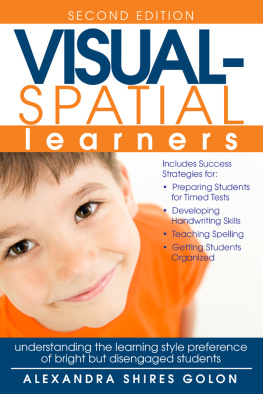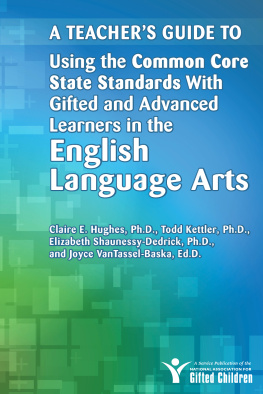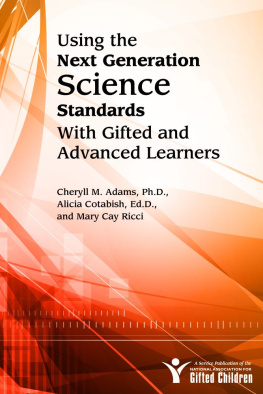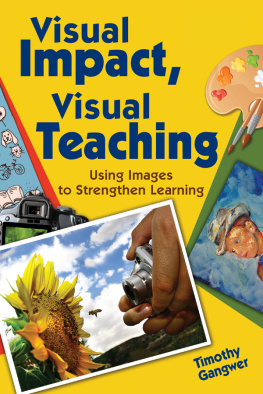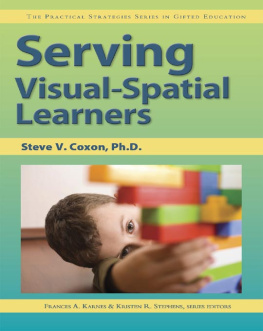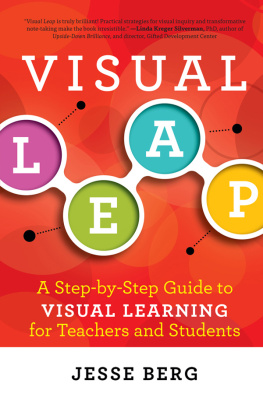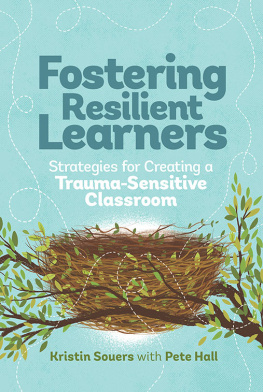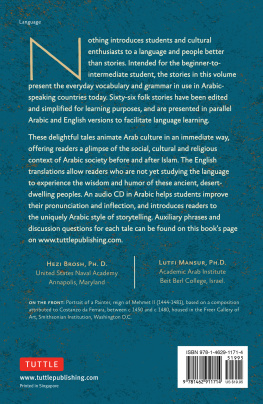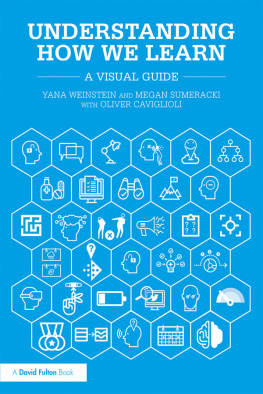


Library of Congress catalog information currently on file with the publisher.
Copyright 2017, Prufrock Press Inc.
Edited by Katy McDowall
Cover and Layout Design by Raquel Trevino
ISBN-13: 978-1-61821-660-1
Illustrations on : Illustrated by Buck Jones. From Upside-Down Brilliance: The Visual-Spatial Learner, by L. K. Silverman, 2002, Denver, CO: DeLeon. Copyright 2002 by Linda K. Silverman. Reprinted with permission.
Illustration on : Illustrated by Buck Jones. From Raising Topsy-Turvy Kids: Successfully Parenting Your Visual-Spatial Child, by A. S. Golon, 2004, Denver, CO: DeLeon. Copyright 2004 by Alexandra Shires Golon. Reprinted with permission.
Illustrations on : Illustrated by Buck Jones. From If You Could See the Way I Think: A Handbook for Visual-Spatial Kids, by A. S. Golon, 2002, Denver, CO: DeLeon. Copyright 2002 by Alexandra Shires Golon. Reprinted with permission.
Illustration on page : Illustrated by Buck Jones. From The Visual-Spatial Classroom: Differentiation Strategies That Engage Every Learner!, by A. S. Golon, 2006, Denver, CO: Visual-Spatial Resource. Copyright 2006 by Alexandra Shires Golon. Reprinted with permission.
No part of this book may be reproduced, translated, stored in a retrieval system, or transmitted, in any form or by any means, electronic, mechanical, photocopying, microfilming, recording, or otherwise, without written permission from the publisher.
For more information about our copyright policy or to request reprint permissions, visit http://www.prufrock.com/permissions.
At the time of this books publication, all facts and figures cited are the most current available. All telephone numbers, addresses, and website URLs are accurate and active. All publications, organizations, websites, and other resources exist as described in the book, and all have been verified. The authors and Prufrock Press Inc. make no warranty or guarantee concerning the information and materials given out by organizations or content found at websites, and we are not responsible for any changes that occur after this books publication. If you find an error, please contact Prufrock Press Inc.

| Prufrock Press Inc.
P.O. Box 8813
Waco, TX 76714-8813
Phone: (800) 998-2208
Fax: (800) 240-0333
http://www.prufrock.com |
TABLE OF CONTENTS
Introduction
What Does the Latest Brain Research Tell Us?: A Primer on Brain Lateralization, or Hemisphericity
The theory of two distinct hemispheres (what many have referred to as our right brain and left brain) and its premise that humans strongly prefer one over the other gained widespread and long-lasting popularity in the 1990s. The pop psychology notion of left-brained individuals excelling at language, math, and sequential thought, while right-brained individuals are creative, intuitive, and empathic, however, has largely been debunked. For most cognitive tasks, both hemispheres are required. But the idea of lateralization, or each hemisphere specializing in specific tasks, has roots in research that continues to fascinate and hold true. The anecdotes of teachers, parents, and students about the successes theyve realized when addressing the strengths of preferred learning styles cannot go unnoticed. According to Vlachos, Andreou, and Delliou (2013), Although the human brain acts as an integrated whole, each of the two cerebral hemispheres appears to be specialized for qualitatively different types of cognitive processing (para. 3).
The idea of lateralization, or brain hemisphericity, has its origins in the work of Drs. Roger Sperry and Michael Gazzaniga and their split-brain research on epileptic patients (Gazzaniga, 2015). They discovered the capabilities of each hemisphere when the connective fibers of the corpus callosumthe band that joins the two hemisphereswere split (done to curb seizures from spreading across the patients brain). In monkeys and eventually in humans, it was evident that the left hemisphere managed tasks involving communication while the right hemisphere managed spatial awareness tasks (much more about the capabilities of each hemisphere follows). And so, the idea of a left brain and a right brain was born.
As I learned from my time studying under Dr. Linda Silverman, Director of the Gifted Development Center, however, use of the terms left brain and right brain implies we have two brains, as opposed to the physiological reality of two hemispheres of a single brain. As such, and barring a dramatic evolutionary feat of our species, I prefer the terms left hemisphere and right hemisphere instead.
Although it is now understood that both hemispheres of the brain are needed for nearly every cognitive task and that significant research remains to be completed before we can definitively map every one of the brains areas to specific tasks and capabilities, there is still substantial and ongoing research to support that addressing what we know about the brains hemispheres can yield significant results in terms of instructional design and delivery. There remains evidence of an individuals propensity to use a mode processing associated with one hemisphere or the other when a choice is given (Vlachos, Andreou, and Delliou, 2013, para. 3). Language skills, for example, continue to prove to be a left-hemispheric capability for most people. Using positron emission tomography (PET) scans, researchers can view the activity of the hemispheres as patients engage in specific tasks. They have confirmed that for 97% of right-handed people language areas reside in the left hemisphere (Boeree, 2004, para. 2).
If we accept that specific cognitive tasks are managed by either the left or right hemisphere, it follows, then, that it may be of significance to understand if a learner possesses greater strength and ability in one hemisphere over another. Lets begin by understanding what is known about brain lateralization.
Text Versus Context
The left hemisphere manages the functions of language (from reading, writing, and spelling to translation of the written word), while the right hemisphere provides context to languagethe tone, intonation, and body cluesfor interpreting language. Individuals with damaged right hemispheres do not understand plays on words or puns and can struggle to comprehend a speakers intent. According to Branucci, Lucci, Mazzatenta, and Tommasi (2009), Stronger involvement of the right hemisphere in coding some aspects of person perception seems to be the rule (p. 906).
is an example of the subtlety of word emphasis and the critical role the right hemisphere plays in understanding language. The words of the sentence never change, but the modification of the emphasized word renders an entirely different meaning, so long as the listener has a healthy right hemisphere to assist in the interpretation. This subtle distinction is not understood by individuals with damaged right hemispheres where the ability to provide contextnot just textfrom body language and intonation resides.
Next page
